Kaweah farms find balance under SGMA
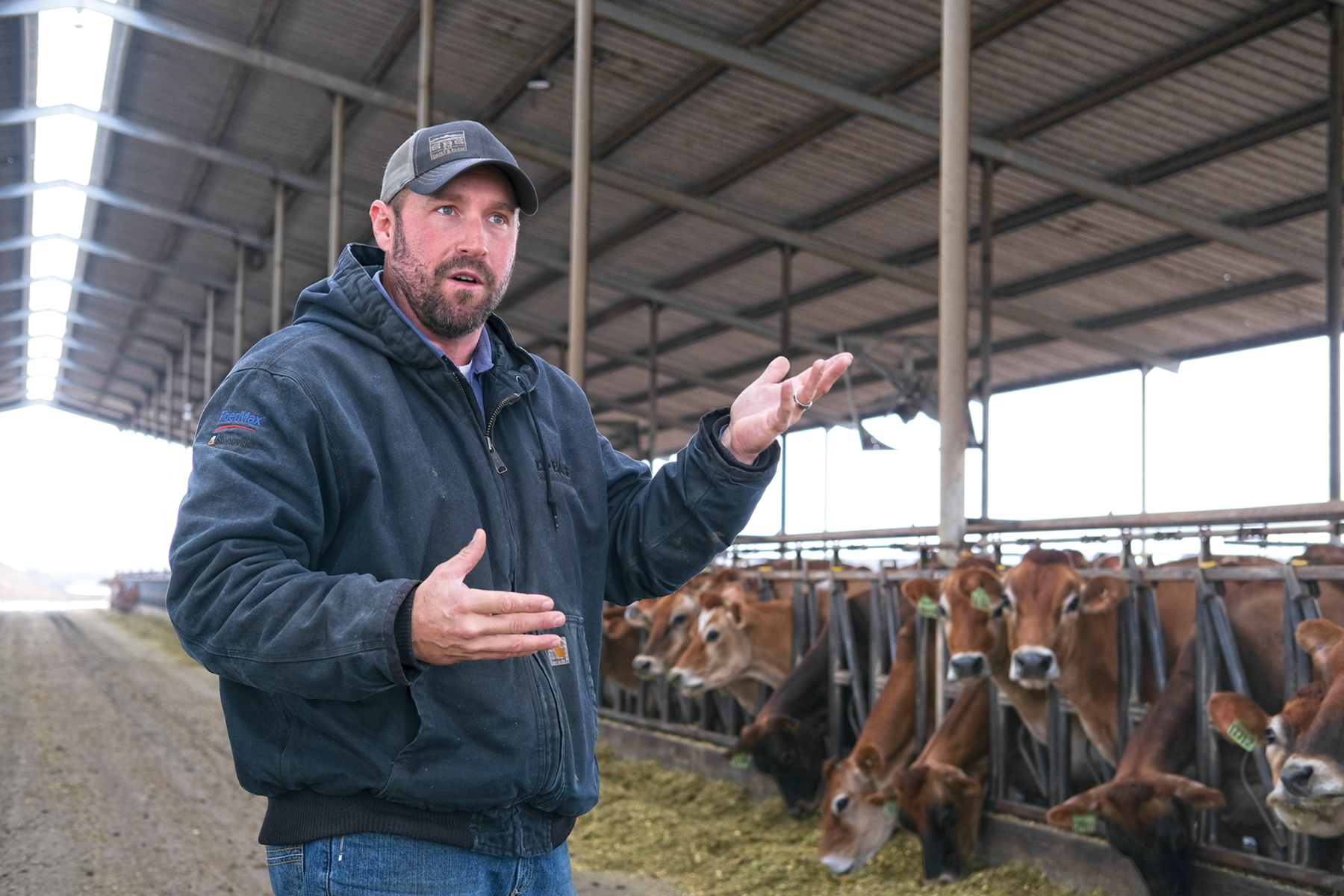
Tulare County farmer Blake Wilbur stands in a freestall barn at his dairy outside the city of Tulare. Wilbur, who is vice chair of the Mid-Kaweah Groundwater Sustainability Agency’s board of directors, has worked with farmers and water managers in the Kaweah Subbasin to balance the region’s aquifer.
Photo/Caleb Hampton
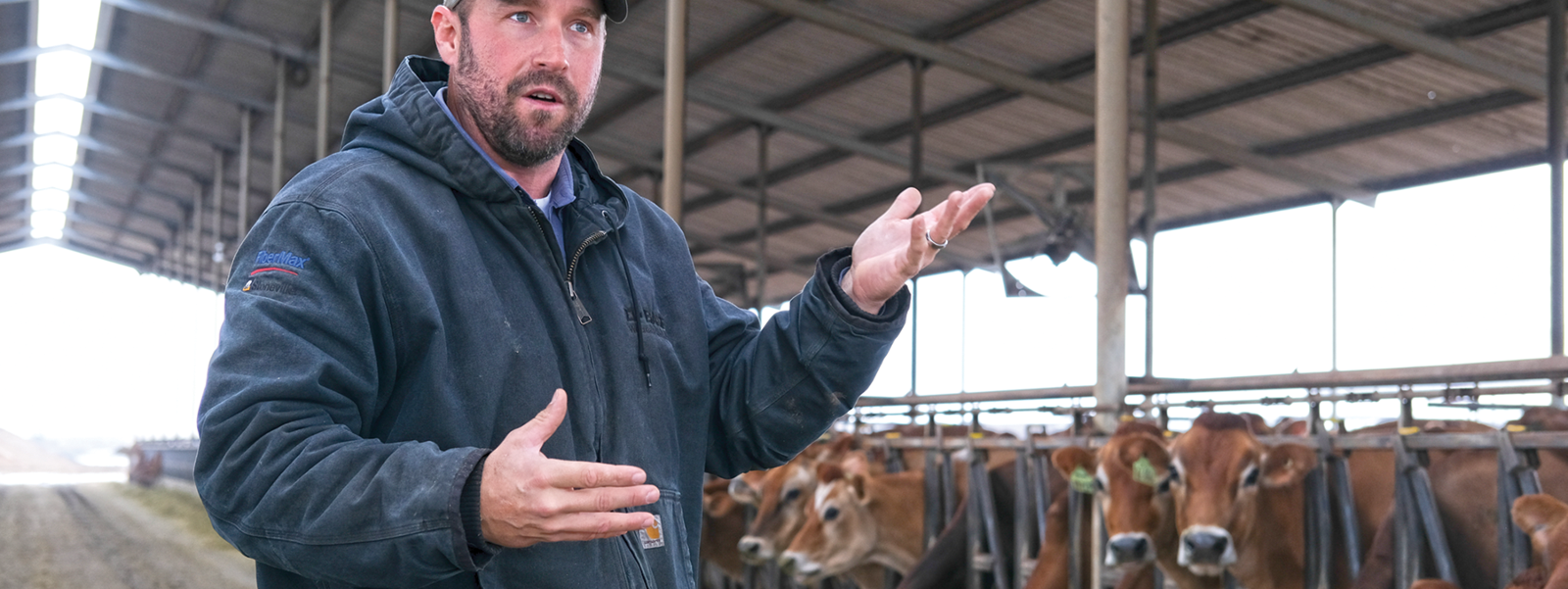
RELATED COVERAGE: Read an exclusive interview with Aaron Fukuda, general manager of the Tulare Irrigation District and interim general manager of the Mid-Kaweah Groundwater Sustainability Agency.
By Caleb Hampton
Blake Wilbur, whose family has farmed in Tulare County for four generations, grew up hearing stories of his grandfather’s artesian wells, the water bubbling to the surface without being pumped and irrigating the family’s cotton, wheat and barley.
“It almost sounds mythical at this point,” said Wilbur, who runs a dairy and grows almonds, pistachios and forage crops.
Decades of groundwater pumping in the San Joaquin Valley enabled agriculture to flourish—providing nearly half of irrigation water—but depleted the region’s aquifers. As the water table fell, shallow residential wells dried up, the ground sunk, damaging infrastructure, and farmers installed deeper wells and more expensive pumps to reach the depleted supply.
“We have to do something,” Wilbur said.
California’s Sustainable Groundwater Management Act—the state’s solution to groundwater depletion—is projected to result in as much as a fifth of the San Joaquin Valley’s farmland going fallow in the next 15 years. For farmers in the region, their future depends on finding ways to farm while adapting to the new paradigm of groundwater regulation.
In November, water managers and farmers in the Kaweah Subbasin, where Wilbur farms, did something no other basin had since SGMA enforcement began last year. After the subbasin’s initial sustainability plan was deemed inadequate, it faced the prospect of state intervention, beginning with a yearlong probation period. Probation would have sidelined local projects and imposed costly pumping fees on growers, more than doubling the amount some local groundwater agencies charge farmers. Two neighboring subbasins were put on probation last year.
But the Kaweah Subbasin’s groundwater agencies overhauled their sustainability plan, and state regulators canceled the probation hearing—for now—noting “substantial progress” in the revised plan.
With three more subbasins being considered for probation this year, “we were all looking at the Kaweah Subbasin as a kind of bellwether,” said Alexandra Biering, a director of policy advocacy for the California Farm Bureau. Water managers in the subbasin had gotten an early jump on developing infrastructure to adapt to SGMA, she said, and took bold steps during the past few years to fix their sustainability plan.
“The Kaweah Subbasin has become the model,” Biering said. “If they were able to avoid probation, it would give us hope that others could as well.”
False hope
Aaron Fukuda, interim general manager of the Mid-Kaweah Groundwater Sustainability Agency, one of three GSAs in the Kaweah Subbasin, said the subbasin has come a long way.
Its first sustainability plan, submitted in 2020, prioritized adding more water to their system rather than pumping less.
“We had this false hope that we were going to recharge our way to sustainability,” Fukuda said, referring to diverting flood releases through canals and onto open farmland, orchards or recharge basins, where the water then percolates into the aquifer.
Tulare Irrigation District, which Fukuda also manages and whose membership overlaps with the Mid-Kaweah GSA, made big investments in recharge infrastructure. But instead of floods came drought, prompting more groundwater pumping and providing no recharge.
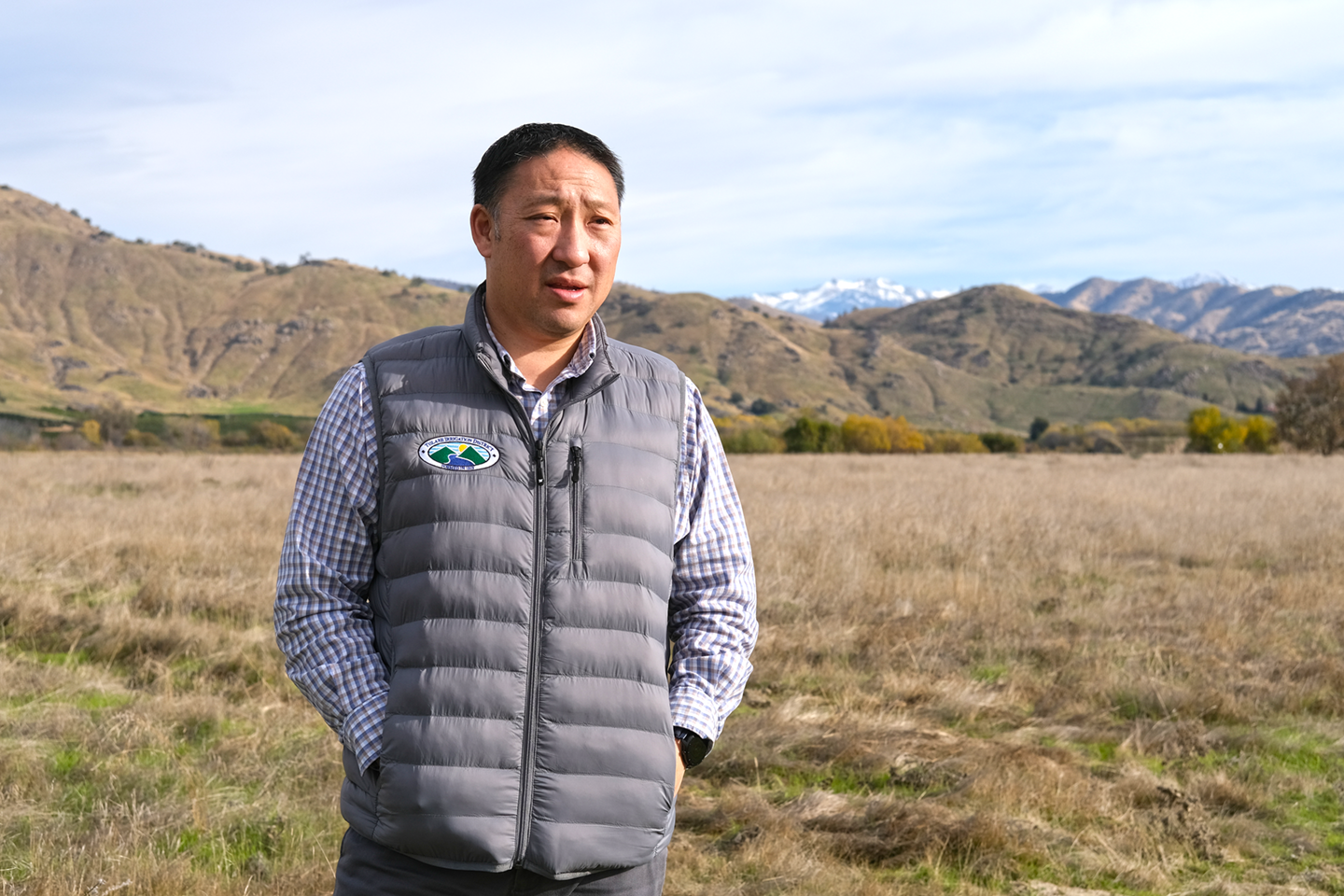
Photo/Caleb Hampton
Under SGMA, groundwater basins have until 2040 to achieve sustainability. But since 2020, they have been required to prevent “undesirable results” such as unreasonable further depletion, subsidence and impacts to residential wells. The California Department of Water Resources determined the Kaweah Subbasin’s plan failed to prevent those outcomes.
“We knew the plan wasn’t right,” Fukuda said, because aquifer levels continued to decline. In 2021, he said, “growers came to me and said they were having to do all kinds of well work because they were drying up.”
To turn things around, the subbasin’s GSA managers imposed some of the state’s first groundwater pumping limits—or allocations—on growers. Then, Fukuda held a vote to increase fees on landowners in his district from $32 an acre to a potential $140 an acre, partly to fund the GSA.
Farmers he had worked with for years went into Fukuda’s office and “ripped me a new one,” he said. But the growers understood the alternative was to see the subbasin brought under state control, and they encouraged him to make hard decisions.
“I’m not happy to have to spend money,” said Dave Van Groningen, who farms in Tulare County and serves on the Greater Kaweah GSA’s board of directors. “But I see the goal in sight and a path to it.”
Starting from scratch
In 2022, the subbasin’s managers tore up their sustainability plan and started from scratch, putting pumping restrictions first and recharge second.
In the Mid-Kaweah GSA, farms were allocated 2.5 acre-feet of groundwater per acre per year. The amount was calculated to put a buffer between the area’s groundwater levels—measured at monitoring wells across the subbasin—and the deeper “minimum thresholds” at which impacts such as subsidence and impacted wells could occur. Growers in the area had typically pumped more than 3 acre-feet of water per year, Fukuda said, “so we knew we were going to reduce pumping.”
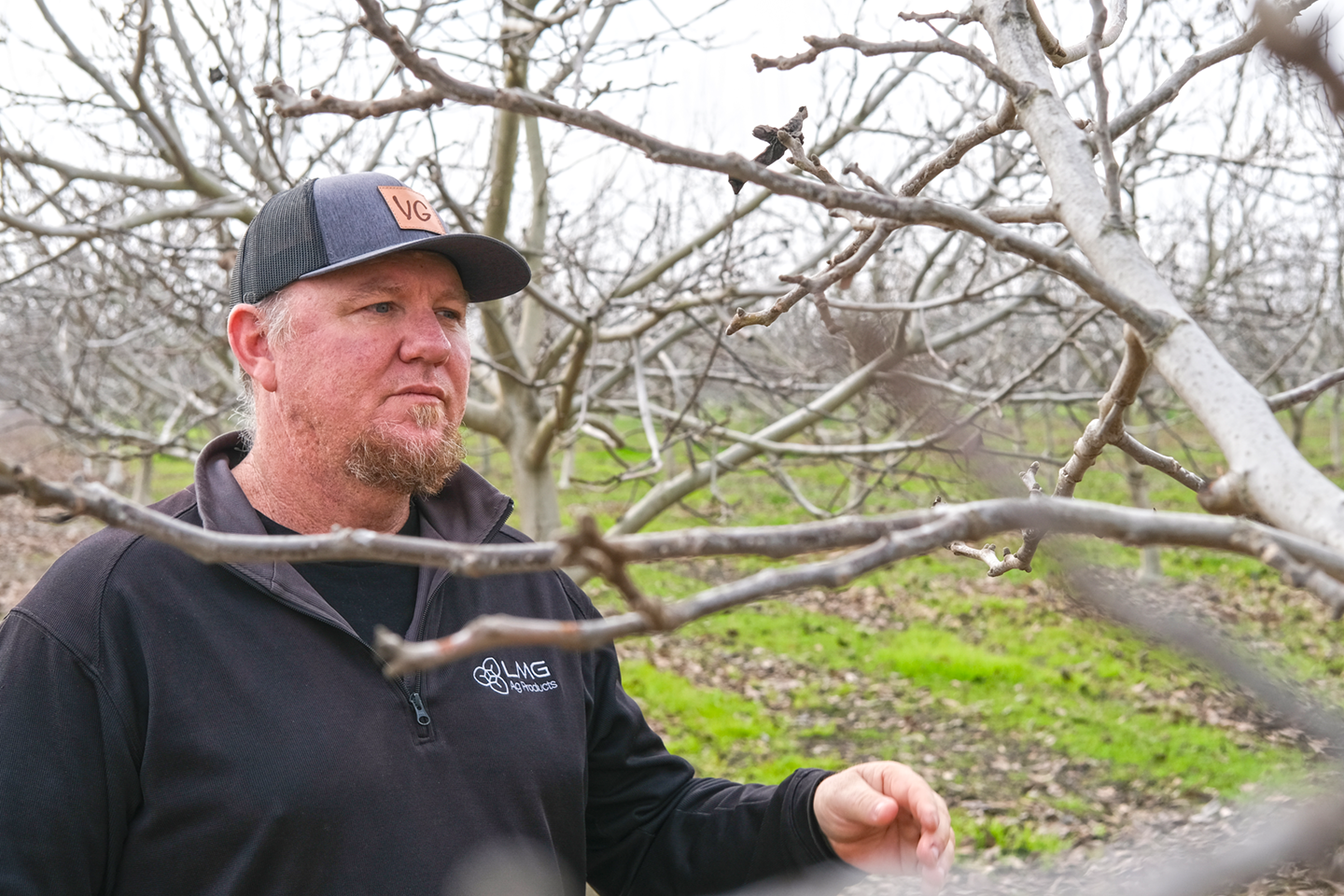
Photo/Caleb Hampton
Edward Ortiz, spokesperson for the California State Water Resources Control Board, which is charged with enforcing SGMA, said that in critically overdrafted subbasins such as Kaweah, implementing groundwater allocations is the “most critical” measure for compliance.
In 2022, the first year the allocation was imposed, farmers in the district pumped 13% less water than the previous year, Fukuda said, largely by fallowing ground.
Then, in early 2023, atmospheric river storms drenched the state, and the subbasin’s recharge planning started paying off.
When growers participate in on-farm recharge, “the excess surface water gets put into the ground as a groundwater credit,” Fukuda said, which is tracked in an online portal. Previously, a handful of farms in the subbasin had accepted flood releases for recharge. But the newly imposed groundwater allocation incentivized participation. That winter, he said, hundreds of growers took floodwater for recharge.
“It’s like the squirrel putting nuts away for the winter,” said Wilbur. “You sink as much as you can to hopefully pull it up in the future.”
Community partnerships
Another reason the Kaweah Subbasin may avoid probation, Ortiz said, is its commitment to protecting residential wells. In the subbasin’s revised plan, Ortiz said, “the most significant changes were to minimum thresholds, which were set to be more protective of domestic wells.”
During the drought of 2012 to 2016, as farmers relied more on groundwater, dozens of wells in the small Tulare County community of Okieville dried up.
“We saw it firsthand,” Fukuda said. “When you don’t have water in your home, you’re lost. It’s almost like a fire happened.”
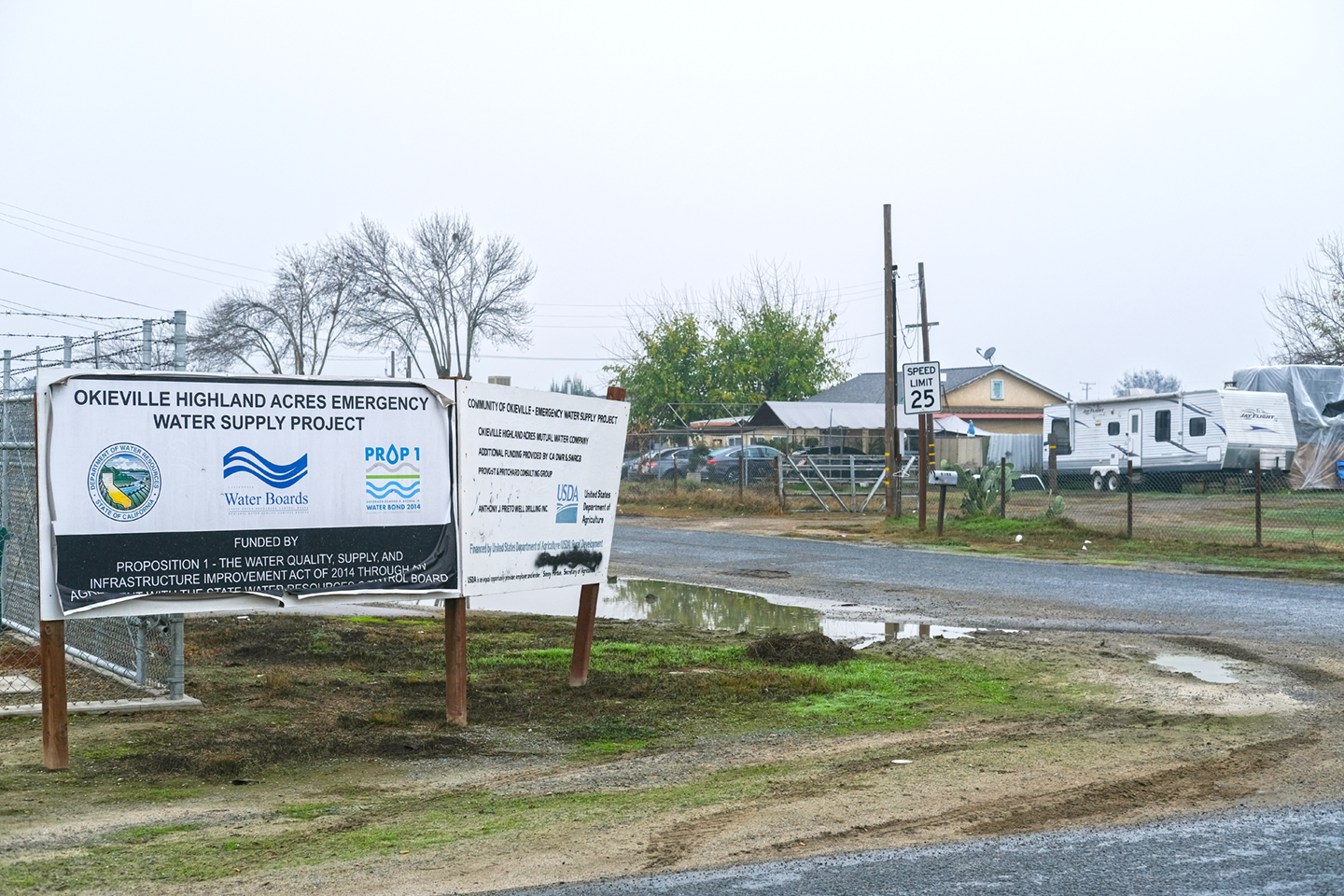
Photo/Caleb Hampton
DWR installed a centralized well and connected all the homes. But there were concerns about that well. TID secured a DWR grant, purchased land and built a recharge basin next to the community, which began sinking water last year to bolster groundwater levels under Okieville.
Elsewhere in the subbasin, “where there might be impacts to drinking water users,” Ortiz said, “there is a robust mitigation plan in place.”
The subbasin’s revised plan includes a well mitigation program it is standing up through a yearly $5.8 million contract with Self-Help Enterprises, funded by groundwater pumping fees imposed on growers. The organization provides bottled water, tanked water and well replacement when needed.
“These are not easy projects,” said Biering, the Farm Bureau director, noting the expense to farmers. “But at the end of the day, the growers are going to be in a better position.”
Fighting for survival
Growers said a couple of wet years spared them some pain at the outset of the allocation system. But complying with SGMA has still taken a toll.
Wilbur, who serves as vice chair of the Mid-Kaweah GSA’s board of directors, estimated the fees he pays to fund the GSA and its projects amount to a 10% pay cut.
On top of that, pumping limits have affected cropping. Wilbur once grew all the forage needed for his dairy. But he has stopped growing alfalfa to save water, instead purchasing hay from Southern California and Nevada. In a drought year without surface water deliveries, Wilbur calculated, he will need to fallow a quarter of his field crops.
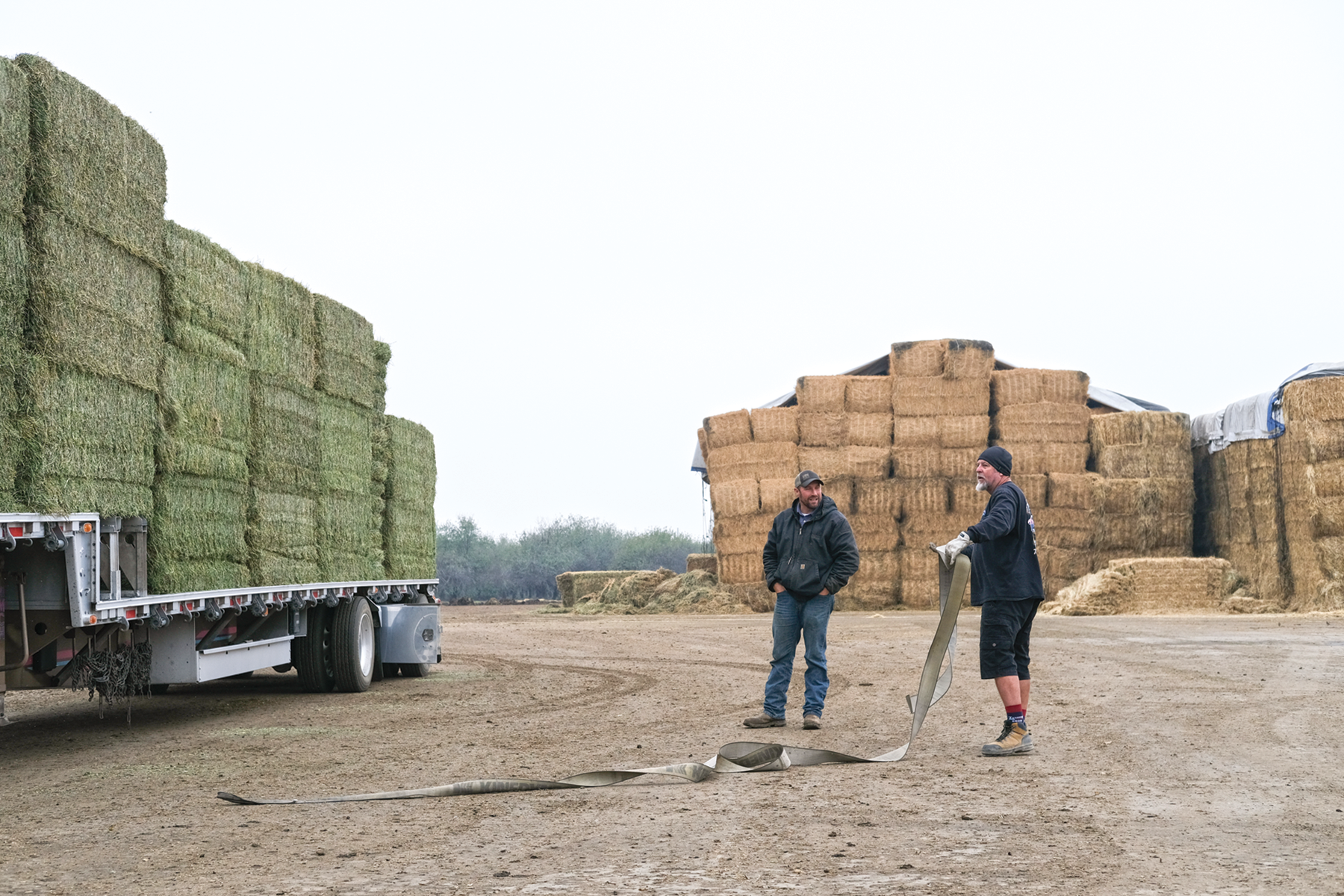
Photo/Caleb Hampton
Meanwhile, tree crop farmers have taken out blocks of trees to concentrate their water on what remains. Van Groningen removed some of his walnut trees, he said, and he has torn out blocks he manages for neighbors, leaving some open and replanting some with crops such as prunes that need less water. Orchards already took 20 years to pay off, Van Groningen said. Now, with open ground cutting into yields, “your payback on that is moved way further.”
The diminished returns have made it harder for some growers to secure yearly operating loans and have impacted the value of farmland. During the past couple years, some orchards in the region have lost more than half their value, according to the American Society of Farm Managers and Rural Appraisers.
With agriculture in the valley fighting for survival, Van Groningen said, “our goal is to try to save as much of it as we can—to give growers options to keep their livelihood going and to keep this valley looking the way it does.”
(Caleb Hampton is an assistant editor of Ag Alert. He may be contacted at champton@cfbf.com.)




